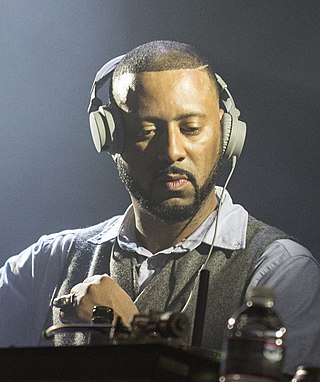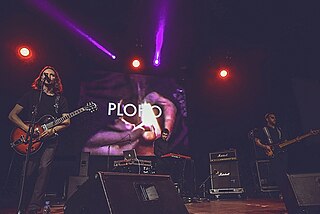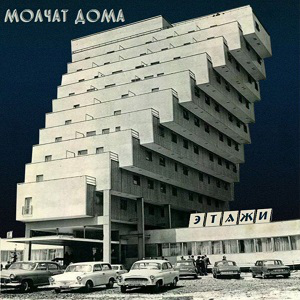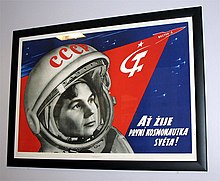
The music of the Soviet Union varied in many genres and epochs. The majority of it was considered to be part of the Russian culture, but other national cultures from the Republics of the Soviet Union made significant contributions as well. The Soviet state supported musical institutions, but also carried out content censorship. According to Vladimir Lenin, "Every artist, everyone who considers himself an artist, has the right to create freely according to his ideal, independently of everything. However, we are communists and we must not stand with folded hands and let chaos develop as it pleases. We must systemically guide this process and form its result."
Chillwave is a music microgenre that emerged in the late 2000s. It is characterized by evoking the popular music of the late 1970s and early 1980s while engaging with notions of memory and nostalgia. Common features include a faded or dreamy retro pop sound, escapist lyrics, psychedelic or lo-fi aesthetics, mellow vocals, slow-to-moderate tempos, effects processing, and vintage synthesizers.

James Ferraro is an American experimental musician, producer, composer and contemporary artist. He has been credited as a pioneer of the 21st century genres hypnagogic pop and vaporwave, with his work exploring themes related to hyperreality and consumer culture. His music has drawn on diverse styles such as 1980s electronic music, easy listening, drone, lo-fi, sound collage, and R&B.

Vaporwave is a microgenre of electronic music and a subgenre of hauntology, a visual art style, and an Internet meme that emerged in the early 2010s, and became well-known in 2015. It is defined partly by its slowed-down, chopped and screwed samples of smooth jazz, 1970s elevator music, R&B, and lounge music from the 1980s and 1990s. The surrounding subculture is sometimes associated with an ambiguous or satirical take on consumer capitalism and pop culture, and tends to be characterized by a nostalgic or surrealist engagement with the popular entertainment, technology and advertising of previous decades. Visually, it incorporates early Internet imagery, late 1990s web design, glitch art, anime, stylized Greek sculptures, 3D-rendered objects, and cyberpunk tropes in its cover artwork and music videos.

The social phenomenon of nostalgia for the era of the Soviet Union, can include its politics, its society, its culture and cultural artifacts, its superpower status, or simply its aesthetics.

Synthwave is an electronic music microgenre that is based predominantly on the music associated with action, science-fiction, and horror film soundtracks of the 1980s. Other influences are drawn from the decade's art and video games. Synthwave musicians often espouse nostalgia for 1980s culture and attempt to capture the era's atmosphere and celebrate it.

Hypnagogic pop is pop or psychedelic music that evokes cultural memory and nostalgia for the popular entertainment of the past. It emerged in the mid to late 2000s as American lo-fi and noise musicians began adopting retro aesthetics remembered from their childhood, such as radio rock, new wave pop, light rock, video game music, synth-pop, and R&B. Recordings circulated on cassette or Internet blogs and were typically marked by the use of outmoded analog equipment and DIY experimentation.

Lofi hip hop is a form of downtempo music that combines elements of hip hop and chill-out music. It was popularized in the 2010s on YouTube.

Ploho is a Russian post-punk band from Novosibirsk, formed in 2013.

The Rise of the Synths is a 2019 documentary film written and directed by Iván Castell and narrated by filmmaker and composer John Carpenter. The film explores the origins and growth of the electronic music genre known as synthwave, charting its rise in popularity from the underground online music scene to its recent mainstream exposure, following use in retro-themed soundtracks, notably the 2011 film Drive and more recently, the television series Stranger Things.
Molchat Doma is a Belarusian post-punk band from Minsk, formed in 2017. Their current lineup consists of Egor Shkutko (vocals), Roman Komogortsev, and Pavel Kozlov. Their style has been described as post-punk, new wave, synth-pop, and cold wave.
Phonk is a subgenre of hip hop and trap music directly inspired by 1990s Memphis rap. The style is characterized by vocals from old Memphis rap tapes and samples from early 1990s hip hop, especially cowbell samples resembling that of the Roland TR-808 drum machine. The genre draws from the dark, distortive techniques of the chopped and screwed sound.
George Clanton is an American electronic musician and singer known for his involvement with the vaporwave music scene. He established his independent record label 100% Electronica in 2015, and in 2019 launched the first vaporwave music festival, 100% ElectroniCON.

Etazhi is the second studio album by Belarusian post-punk band Molchat Doma, first released on 7 September 2018 through Detriti Records. Following the band's signing with Sacred Bones Records in January 2020, the album was released in North America for the first time on 27 March 2020.
Mallsoft is a vaporwave subgenre centered around shopping malls.
Dreampunk is a microgenre of electronic music characterized by its focus on cinematic ambience and field recordings, combined with various traits and techniques from electronic genres such as techno, jungle, electro, and dubstep.
Jornt Elzinga, commonly known as Cat System Corp., is a Dutch musician regarded as a vaporwave figure that originated the mallsoft subgenre. He also previously recorded as Mesektet for his dark ambient releases.











